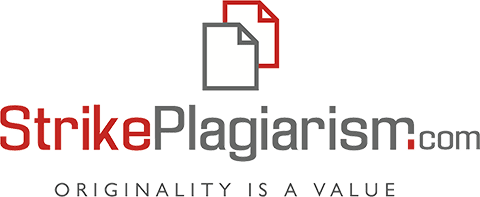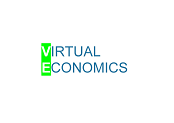Teamwork and Organizational Innovation within Digital Economy: A Moderating Role of Organizational Citizenship
DOI:
https://doi.org/10.34021/ve.2023.06.03(2)Keywords:
creative ability; digital economy; employee motivation; organizational citizenship; organizational innovation; organizational learning; teamwork; digitalization; artificial intelligence.Abstract
The main aim of the study is to examine how team working influences organizational innovation within the framework of the digital economy and also to explore the role of organizational citizenship behaviour in moderating the relationship between team working and organizational innovation. The persistence of this research was to study how the moderating variable (Organizational Citizenship) mitigates the relationship between the independent variables (Organizational Learning, Creative Ability, Employee Motivation, Adequate Resource Allocation and, Team Working) and the dependent variable (Organizational Innovation). The primary data was collected by distributing questionnaires online through Google Docs to Turkish academicians working in 45 different Turkish universities. The sample size used for this study was 115 respondents. SPSS software was used to analyse the data for reliability, and correlation analysis. The results were contingent on the usual principles of statistics. Data used for this study is also reliable to see the results. Based on the results the hypotheses for dependent and independent variables were accepted and all of the independent variables (Organizational Learning, Creative Ability, Employee Motivation, Adequate Resource Allocation, and Team Working) have a significant effect on the dependent variable (Organizational Innovation) whereas the hypotheses including moderating variable were rejected as moderating variable (Organizational citizenship) does not moderate the relationship between independent variables and dependent variable. Moreover, the findings suggest that teamwork has a strong relation with organizational innovation whereas organizational citizenship does not moderate the relationship between teamwork and organizational innovation.
Downloads
References
Lam, A. (2009). Organizational Innovation. In J. Fagerberg, & D. C. Mowery, The Oxford Handbook of Innovation (pp. 115–147). Oxford Academic. https://doi.org/10.1093/oxfordhb/9780199286805.003.0005
Fay, D., Shipton, H., West, M. A., & Patterson, M. (2015). Teamwork and Organizational Innovation: The Moderating Role of the HRM Context. Teamwork and Organizational Innovation, 261–277. https://doi.org/10.1111/caim.12100
Richter, A. W., Dawson, J. F., & West, M. A. (2011). The effectiveness of teams in organizations: a meta-analysis. International Journal of Human Resource Management, 22(13) 2749–2769. https://doi.org/10.1080/09585192.2011.573971
Organizational Psychology Degrees. (2023). What is Organizational Citizenship Behavior? https://www.organizationalpsychologydegrees.com/faq/what-is-organizational-citizenship/#:~:text=Organizational%20citizenship%20is%20an%20employee's,in%20the%20basic%20job%20description.
Sloat, K. C. (1999). Organizational citizenship. Professional Safety; Des Plaines, 44(4), 20–23. https://www.proquest.com/scholarly-journals/organizational-citizenship/docview/200332744/se-2
Foerster-Metz, U. S., Marquardt, K., Golowko, N., Kompalla, A., & Hell, C. (2018). Digital Transformation and its Implications on Organizational Behavior. Journal of EU Research in Business, 2018, 1–14. https://doi.org/10.5171/2018.340873
Haefnera, N., Wincent, J., Parida, V., & Gassmann, O. (2021). Artificial intelligence and innovation management: A review, framework, and research agenda. Technological Forecasting & Social Change, 162, 1–10. https://doi.org/10.1016/j.techfore.2020.120392
Daft, R. L. (1978). A Dual-Core Model of Organizational Innovation. Academy of Management Review, 21(2), 193–210. https://doi.org/10.2307/255754
Damanpour, F. (1996). Organizational Complexity and Innovation: Developing and Testing Multiple Contingency Models. Management Science, 42(5), 693–716. https://www.jstor.org/stable/2634460
Lam, A. (2006). Organizational Innovation. In D. C. Jan Fagerberg (ed.), The Oxford Handbook of Innovation (pp. 115–147). Oxford University Press. http://dx.doi.org/10.1007/978-3-319-31816-5_3017-1
Sousa, F. C., Pellissier, R., & Monteiro, I. P. (2012). Creativity, Innovation And Collaborative Organizations. The International Journal of Organizational Innovation, 5(1), 1–39. https://api.semanticscholar.org/CorpusID:46469132
OECD. (2007). Education at a Glance 2005: OECD Indicators. OECDilibrary. https://doi.org/10.1787/eag-2007-en
Chutivongse, N., & Gerdsr, N. (2020). Creating an innovative organization Analytical approach to develop a strategic roadmap guiding organizational development. Journal of Modelling in Management, 15(1), 50–88. https://doi.org/10.1108/JM2-05-2018-0067
Argote, L., & Miron-Spektor, E. (2011). Organizational Learning: From Experience to Knowledge. Organization Science, 22(5), 1123–1137. https://www.jstor.org/stable/41303106.
Liao, S.-h., Fei, W.-C., & Liu, C.-T. (2008). Relationships between knowledge inertia, organizational learning and organization innovation. Technovation, 28(4), 183–195. https://doi.org/10.1016/j.technovation.2007.11.005
Saki, S., Shakiba, H., & Savari, M. (2013). Study of the Relationship between the Organizational Learning and Organizational Innovation at the University of Tehran. Journal of Organizational Learning and Leadership, 11(1) 1–18. https://api.semanticscholar.org/CorpusID:28399280
DiLiello, T. C., & Houghton, J. D. (2008). Creative Potential and Practised Creativity: Identifying Untapped Creativity in Organizations. Creativity and Innovation Management, 17(1), 37–46. https://doi.org/10.1111/j.1467-8691.2007.00464.x
Rietzschel, M. C. (2015). Organizing Creativity: Creativity and Innovation under Constraints. Creativity and Innovation Management, 24(2), 184–196. https://doi.org/10.1111/caim.12123
DiLiello, T. C., & Houghton, J. D. (2006). Maximizing organizational leadership capacity for the future Toward a model of self-leadership, innovation, and creativity. Organizational leadership capacity, 21(4), 319–337. https://doi.org/10.1108/02683940610663114
Amabile, T. M., Conti, R., Coon, H., Lazenby, J., & Herron, M. (1996). Assessing the work environment for creativity. Academy of Management Journal, 39(5), 1154–1184. https://doi.org/10.2307/256995
O'Donnell, K. (2021, January 31). What is Employee Motivation? https://blog.empuls.io/what-is-employee-motivation/
Busaibe, L., Singh, S. K., Ahmad, S. Z., & Gaur, S. S. (2017). Determinants of organizational innovation: a framework. Gender in Management: An International Journal, 32, 578–589. https://doi.org/10.1108/GM-01-2017-0007
Yang, Y., & Konrad, A. M. (2011). Diversity and organizational innovation: The role of employee involvement. Journal of Organizational Behavior, 32, 1062–1083. https://api.semanticscholar.org/CorpusID:143516365
Sareen, A., & Pandey, S. (2022). Organizational Innovation in Knowledge Intensive Business Services: The Role of Networks, Culture and Resources for Innovation. FIIB Business Review, 11(1), 107–118. https://doi.org/10.1177/2319714521102073
Organ, D. W. (1988). Organizational Citizenship Behavior: The Good Soldier Syndrome. Lexington, Mass: Lexington Books. https://psycnet.apa.org/record/1988-97376-000
Waqar, A., & Bektaş, Ç. (2021). Organizational Creativity and Organizational Citizenship: In The Context of Turkish Academicians. 1st International Innovation and Career Congress. (pp. 30-37). Tokat: INANCA. https://www.researchgate.net/publication/354172496
Organizational Psychology Degrees. (2020). What is Organizational Citizenship? https://www.organizationalpsychologydegrees.com/faq/what-is-organizational-citizenship/
Chen, C. C., Wu, J., Yang, S. C., & Tsou, H.-Y. (2008). Importance of Diversified Leadership Roles in Improving Team Effectiveness in a Virtual Collaboration Learning Environment. Journal of Educational Technology & Society, 11(1), 304–321. http://www.jstor.com/stable/jeductechsoci.11.1.304
Oldham, G. R., & Silva, N. D. (2015). The impact of digital technology on the generation and implementation of creative ideas in the workplace. Computers in Human Behavior, 42, 5–11. https://doi.org/10.1016/j.chb.2013.10.041
Yoo, Y., Richard J. Boland Jr., K. L., & Majchrzak, A. (2012). Organizing for Innovation in the Digitized World. Organization Science, 23(5), 1398–1408. https://www.jstor.org/stable/23252314
Lifelong Learning Programme. (2011). Create. http://www.appladesign.net/domains/create/documents/Self-audit_Questionnaire_586.pdf
Bevans, R. (2023). Choosing the Right Statistical Test | Types & Examples. https://www.scribbr.com/statistics/statistical-tests/
Turney, S. (2023). Pearson Correlation Coefficient (r) | Guide & Examples. https://www.scribbr.com/statistics/pearson-correlation-coefficient/
Frost, J. (2023). Cronbach’s Alpha: Definition, Calculations & Example. https://statisticsbyjim.com/basics/cronbachs-alpha/
The LinkedIn Team. (2023). What are the advantages and disadvantages of using Cronbach's alpha as a measure of internal consistency? https://www.linkedin.com/advice/1/what-advantages-disadvantages-using-cronbachs-alpha-measure
Wise-Answer. (2020,). What are the benefits of ANOVA? https://wise-answer.com/what-are-the-benefits-of-anova/
Lee, J. (., Chaudhry, A., & Tekleab, A. G. (2014). An interactionist perspective on employee performance as a response to psychological contract breach. Personnel Review, 43(6), 861–880. http://dx.doi.org/10.1108/PR-10-2012-0173
Statistics Solutions. (2023). Pearson’s Correlation Coefficient. https://www.statisticssolutions.com/free-resources/directory-of-statistical-analyses/pearsons-correlation-coefficient/
Beers, B. (2023). P-Value: What It Is, How to Calculate It, and Why It Matters. https://www.investopedia.com/terms/p/p-value.asp
Cucos, L. (2022). How To Perform Moderation Analysis in SPSS [2 Methods]. https://uedufy.com/how-to-perform-moderation-analysis-in-spss/
Downloads
Published
How to Cite
Issue
Section
License

This work is licensed under a Creative Commons Attribution-NonCommercial 4.0 International License.





